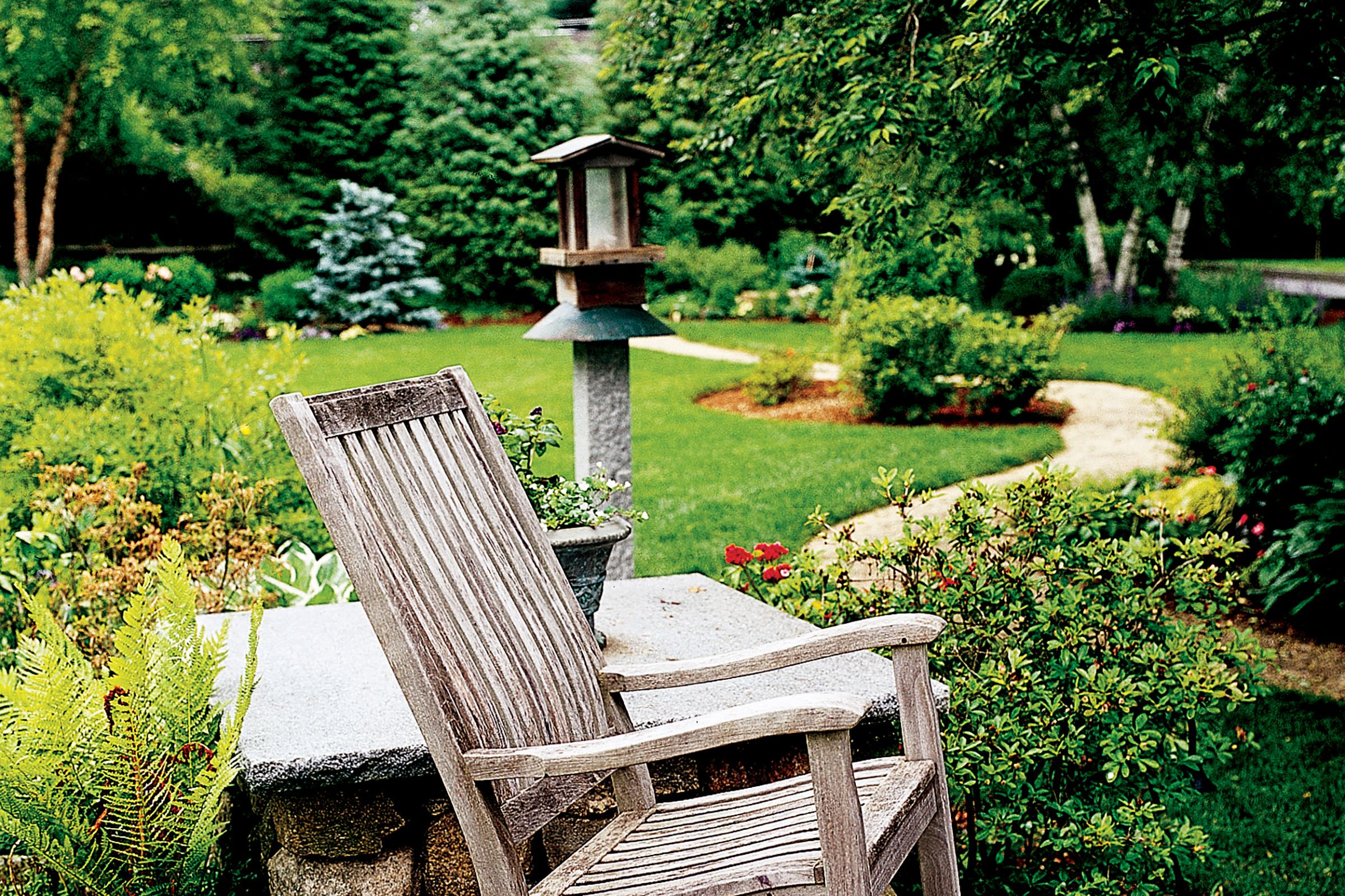Updating your backyard can turn your outdoor space into a personal paradise. Whether you’re starting with a blank slate or revamping an existing yard, the project requires careful planning and execution but results in a customized hang-out spot for you and your loved ones. Our guide walks you through seven essential steps to design and implement a beautiful, functional backyard that matches your lifestyle and boosts your home’s value.
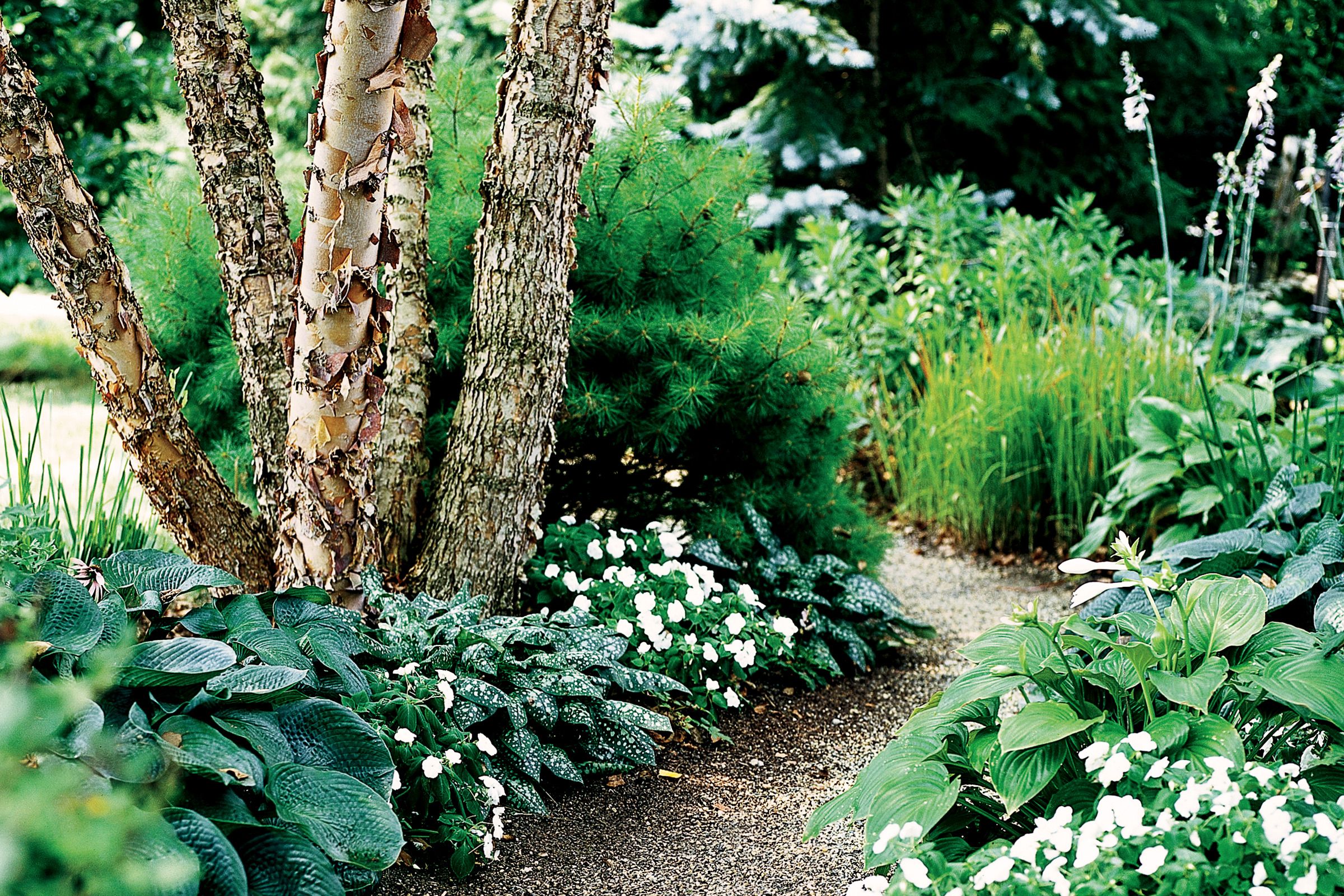
Before: Outdoor furniture was plunked down on grass that ran right up to the French doors lining the back of the house.
After: The doors now open onto a bluestone terrace that overlooks the rest of the property, where This Old House landscape contractor Roger Cook has carved out pathways and planting beds that he fills with a mix of annuals and perennials.
Creating a Backyard from Scratch
Here are our seven steps for creating a backyard from the ground up.
1. Add a Stone Patio
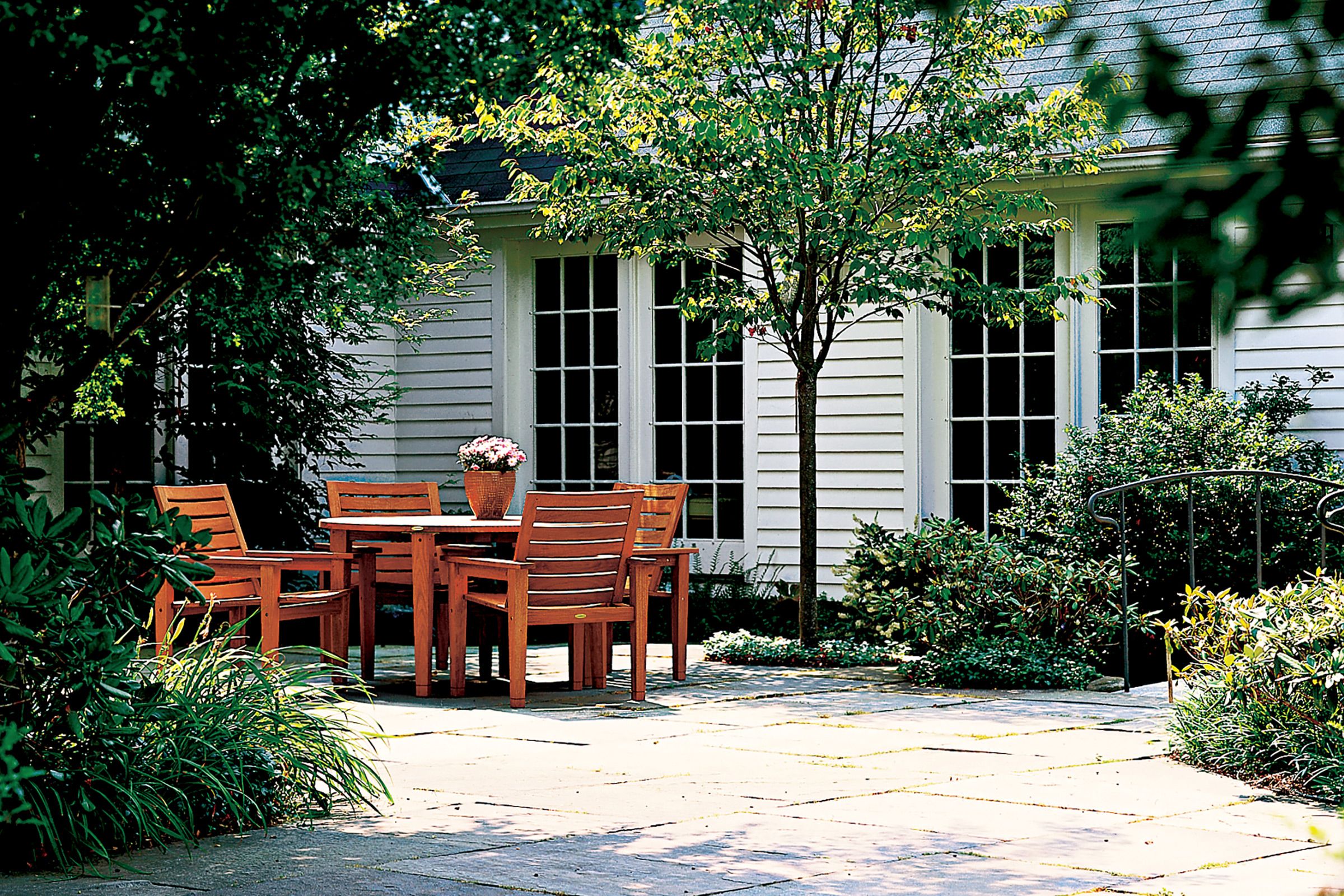
A stone patio serves as the central spot for outdoor living with a stable surface for furniture and activities. When designing your patio, consider its size, shape, and location carefully. A well-planned patio should balance your home’s architecture while offering enough space for activities. Think about how the patio integrates with your landscape as well, making sure it offers a harmonious blend between the indoors and outdoors.
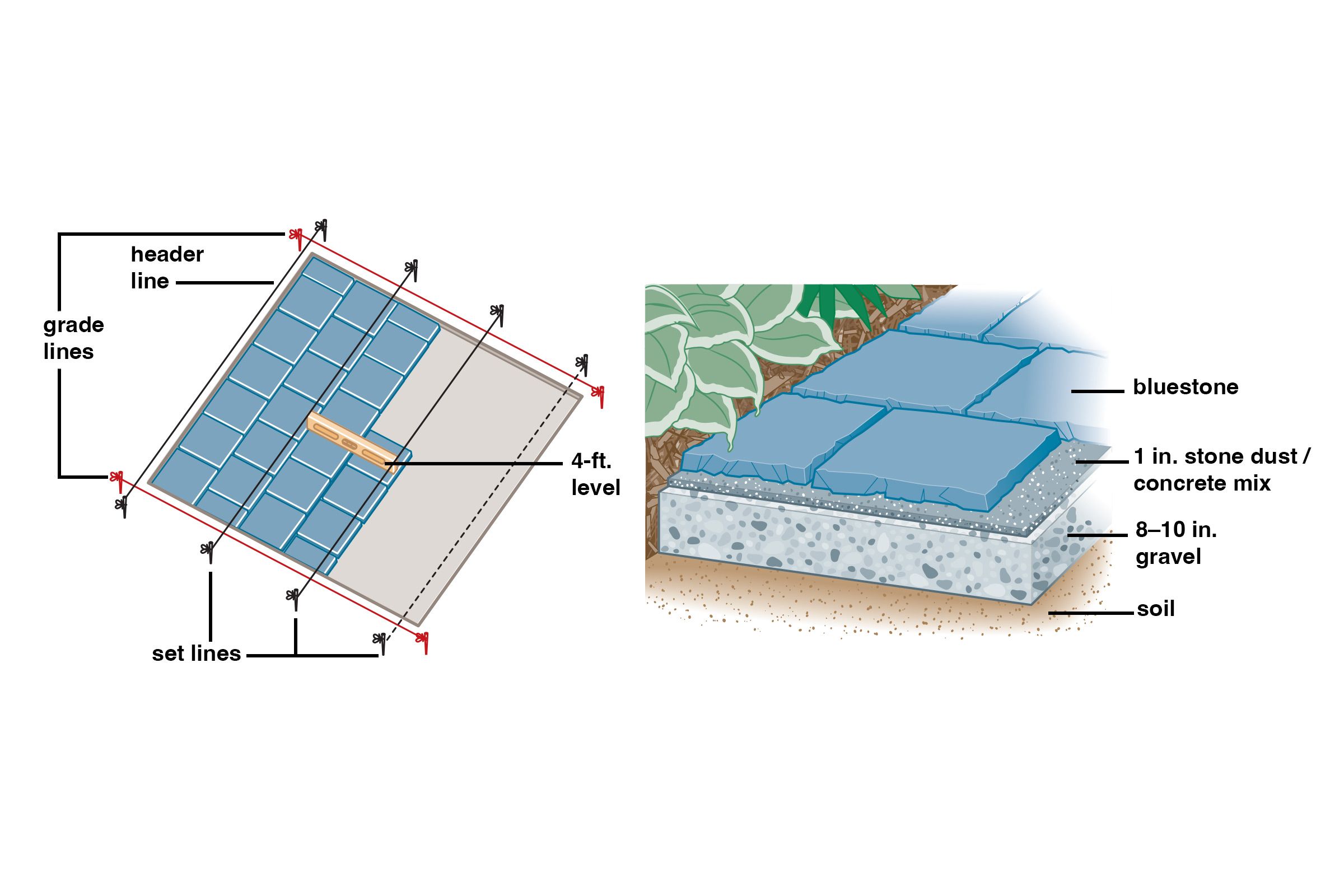
Tips for Creating a Patio
- Size matters: Allow approximately 25 square feet per person for comfortable seating and movement. Test your layout by arranging furniture on the lawn before construction.
- Consider grade changes: Even slight elevation changes can add dimension and help define different areas of your backyard.
- Prepare a proper base: A solid foundation is vital for longevity. Use compacted gravel and stone dust to create a stable base surface for your patio stones.
- Plan for utilities: Install conduits for future irrigation or lighting systems during construction to avoid disturbing the patio later and to set it up for any expansions you might want.
- Build proper drainage: Slope the patio away from your house at a rate of 1/8 inch per foot to prevent water accumulation. In regions with heavy rainfall, this helps protect your home’s foundation.
2. Plant With the Four Seasons in Mind
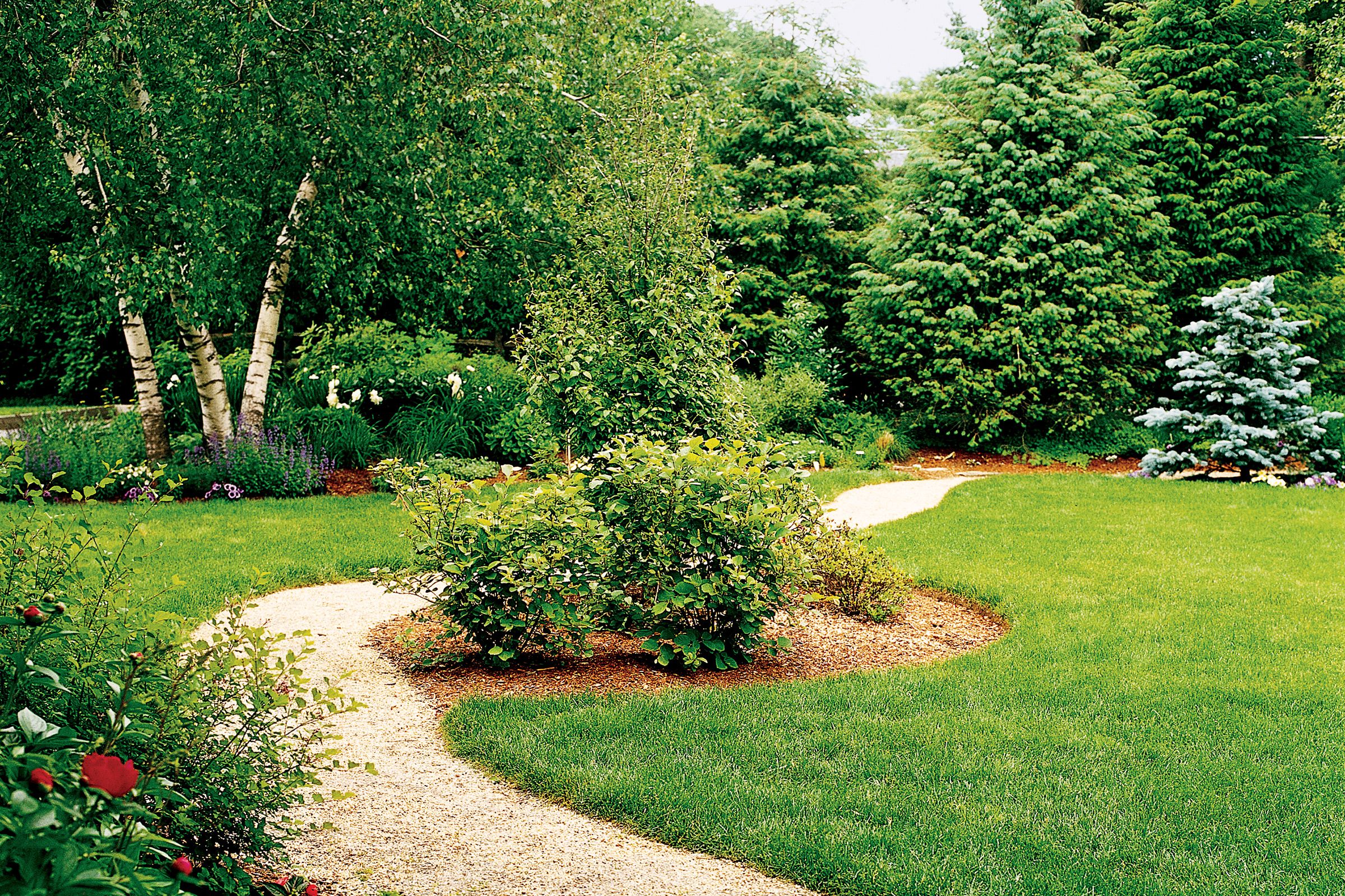
A well-designed backyard should look attractive throughout the year. Select a diverse mix of plants that bloom in different seasons, and consider bloom time, foliage color, and winter hardiness when choosing your plants. Remember, a garden that thrives in all seasons can keep your landscape looking vibrant no matter the time of year.
To create a year-round garden:
- Spring: Include early bloomers like daffodils, tulips, and flowering trees such as dogwoods and cherry blossoms.
- Summer: Have long-blooming perennials like daylilies, peonies, and hydrangeas.
- Fall: Add plants with vibrant autumn foliage, such as Japanese maples and oakleaf hydrangeas.
- Winter: Include evergreens, ornamental grasses, and plants with interesting bark or berries.
Think about your local climate and soil conditions when selecting plants to make sure they thrive in your backyard environment. Consider maintenance requirements for these plants, as well, to keep your garden manageable year-round.
3. Make Space for Moving Water
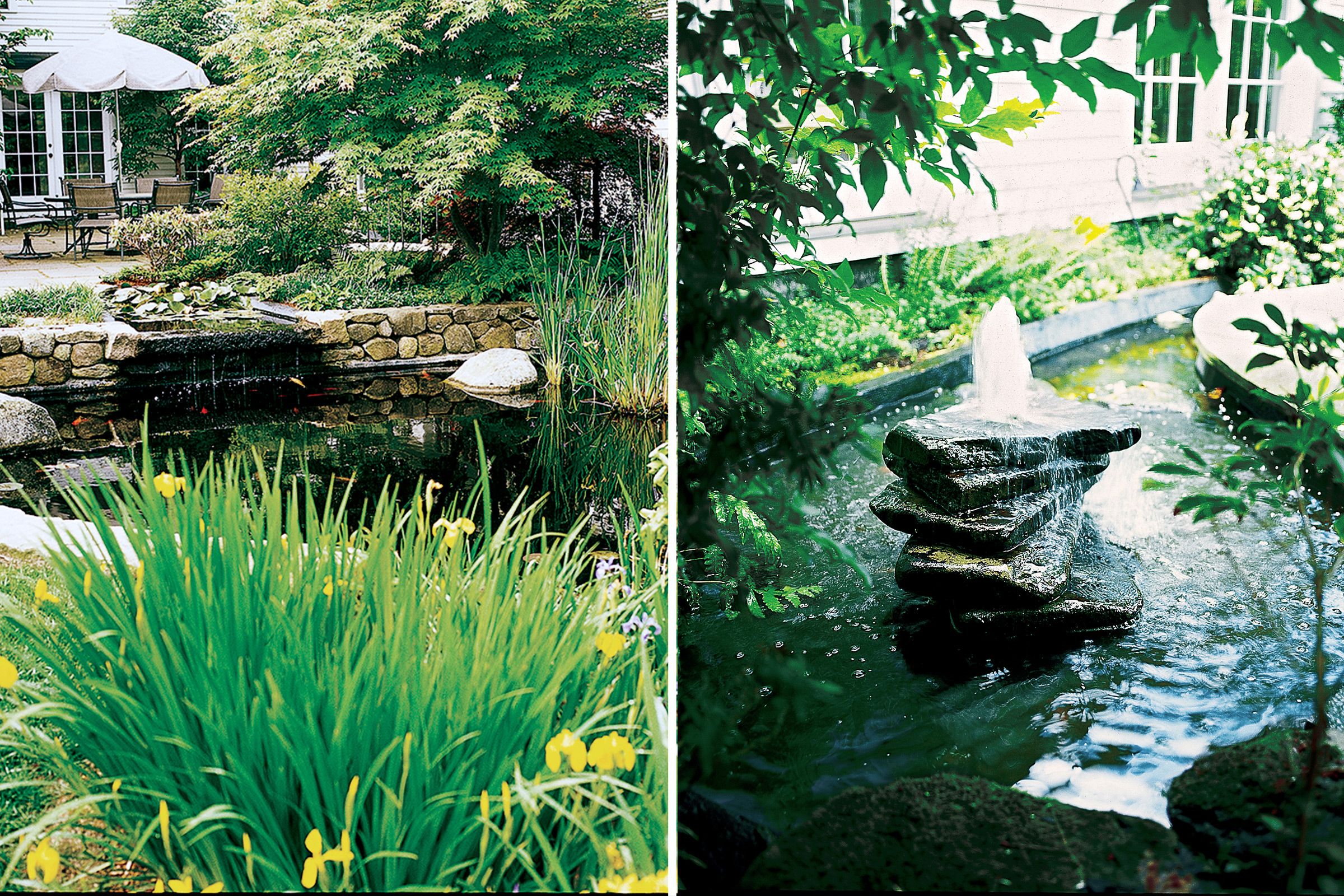
Adding water features into your backyard design can create a soothing atmosphere and attract wildlife. Options range from simple fountains to elaborate ponds and streams. The sound of moving water can mask unwanted noise and be a relaxing backdrop for outdoor activities. Water features can also elevate your backyard’s design by adding an element of tranquility and movement.
Build a Fountain
Creating a do-it-yourself (DIY) fountain is a great project if you want to build a part of the garden. Here are some tips:

- Choose an appropriate container, such as a decorative terra-cotta urn or stone basin.
- Select a submersible pump that matches your fountain size.
- Use flexible tubing to direct water flow.
- Add river rocks or decorative stones to conceal the pump and add layers.
- Install a GFCI outlet to safely power your fountain.
Remember to keep steady water levels and clean your fountain regularly to keep it performing well over time. Regular upkeep helps prevent algae buildup and keeps the water crystal clear.
4. A Garden Path
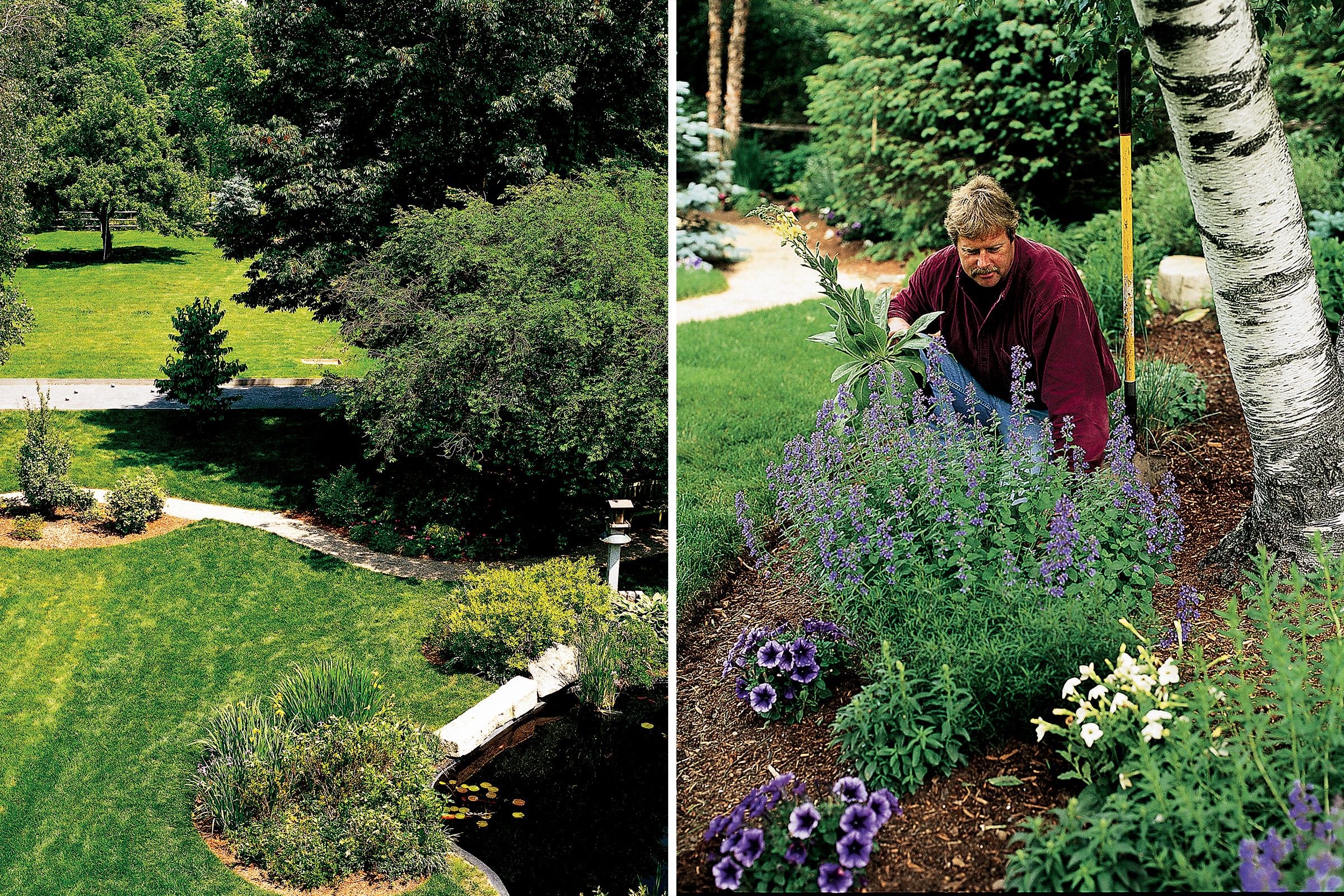
A well-designed garden path not only guides visitors through your backyard but also adds structure to the landscape. Curved paths encourage exploration and create a sense of privacy, while straight paths have sleeker, more formal look. Paths can also function as practical walkways to protect your lawn and garden beds from foot traffic.
When creating a garden path:
- Choose materials that complement your home’s architecture and existing landscape.
- Consider the path’s width—allow at least 3 feet for comfortable walking.
- Use edging materials to define the path and prevent material spread.
- Add lighting for safety and nighttime ambiance.
- Plant low-growing flowers or groundcover along the edges to soften the look.
Garden paths that blend with the surrounding landscape will further add to your backyard’s beauty.
5. Build a Garden Arbor

A garden arbor serves as a lovely focal point in your backyard. It provides support for climbing plants and creates a sense of entry or transition between spaces. Arbors can also add a vertical dynamic and structure, making your garden appear more layered and robust.
The clean lines of this arch echo those of the house and the spindle-style picket fence. The curved top offers a break from the rectangular geometry of the surrounding structures, putting even more of a spotlight on it. Eight to 10 feet is generally a good height for a garden arch. And if it’s to hold a double gate, as this one does, it should be at least 6 feet wide for a gracious entry that could accommodate two people walking side by side.
Tips for Building an Arbor
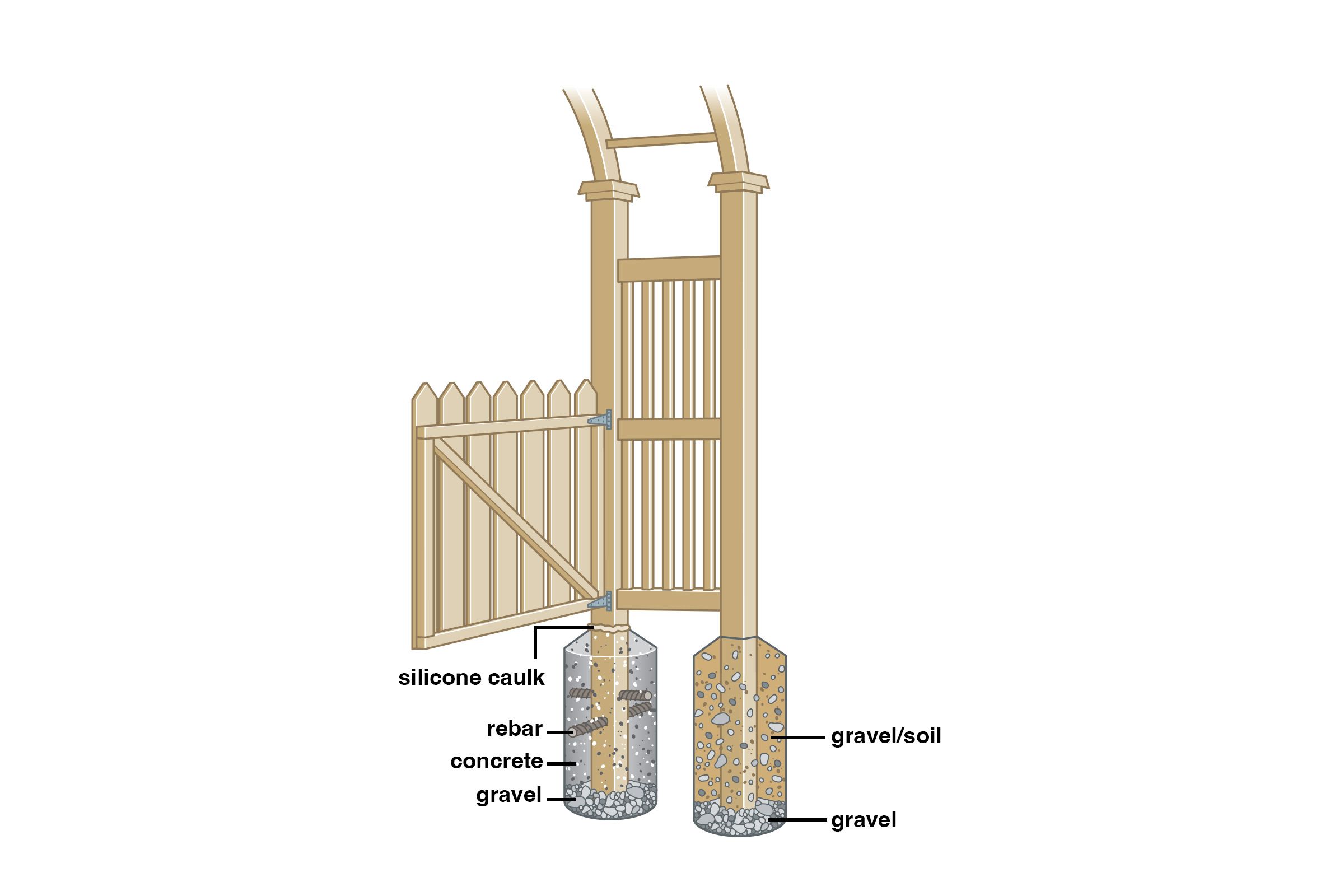
- Choose durable materials like cedar or redwood for natural resistance to decay.
- Make sure it’s well anchored by sinking posts at least 30 inches into the ground.
- Use concrete footings in areas with unstable soil, or to support heavy gates.
- Consider the arbor’s height and width in relation to your overall landscape design.
- Add crossbeams or lattice panels to provide support for climbing plants.
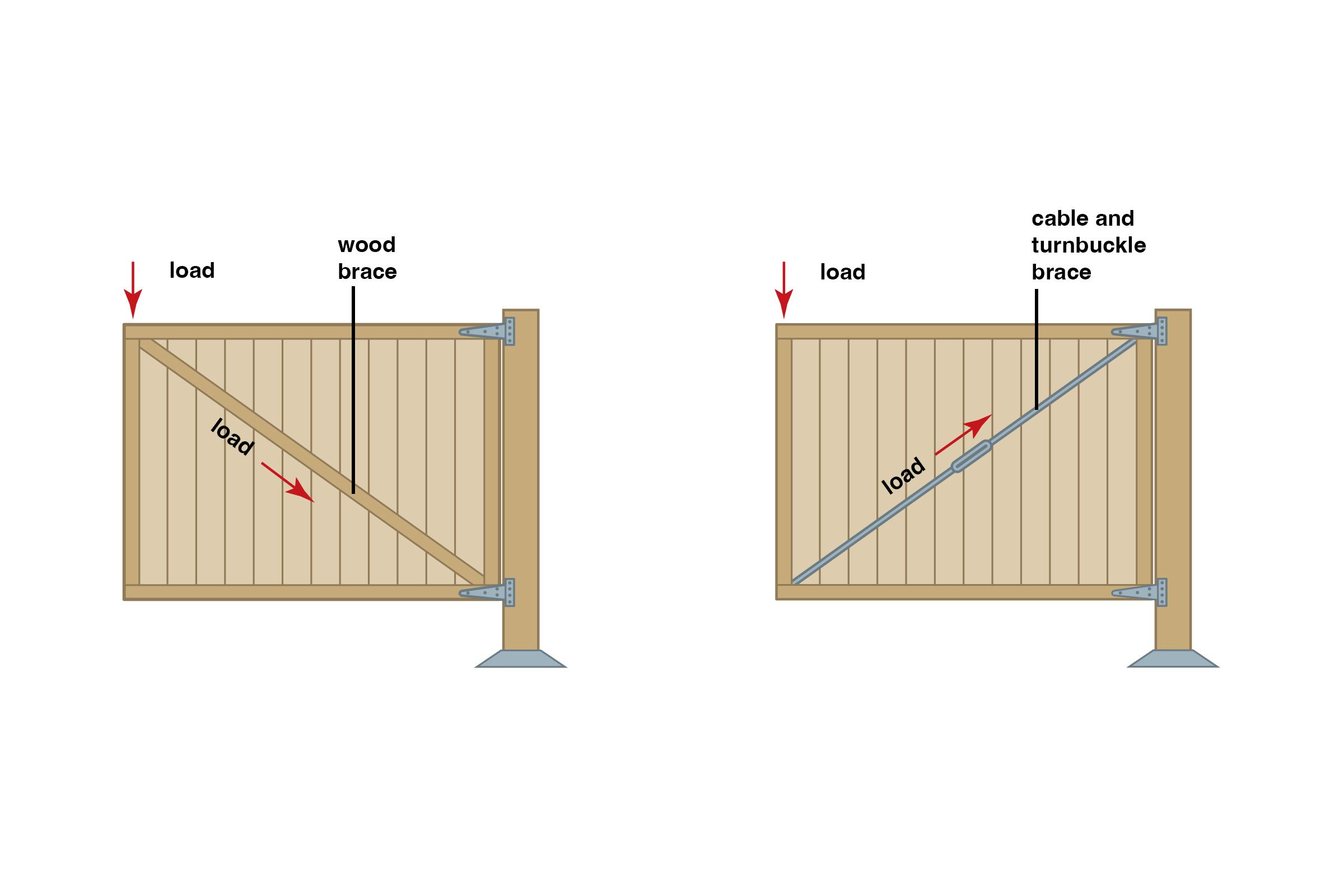
Include a Gate
If adding a gate into your arbor design:
- Use high-quality, weather-resistant hardware.
- Install a diagonal brace to prevent sagging.
- Consider adding a turnbuckle for easy adjustments over time.
- Make sure the gate swings freely and latches securely.
Arbors and gates can serve both functional and design purposes, providing a charming entry point to different lawn areas.
6. Add a Place to Play
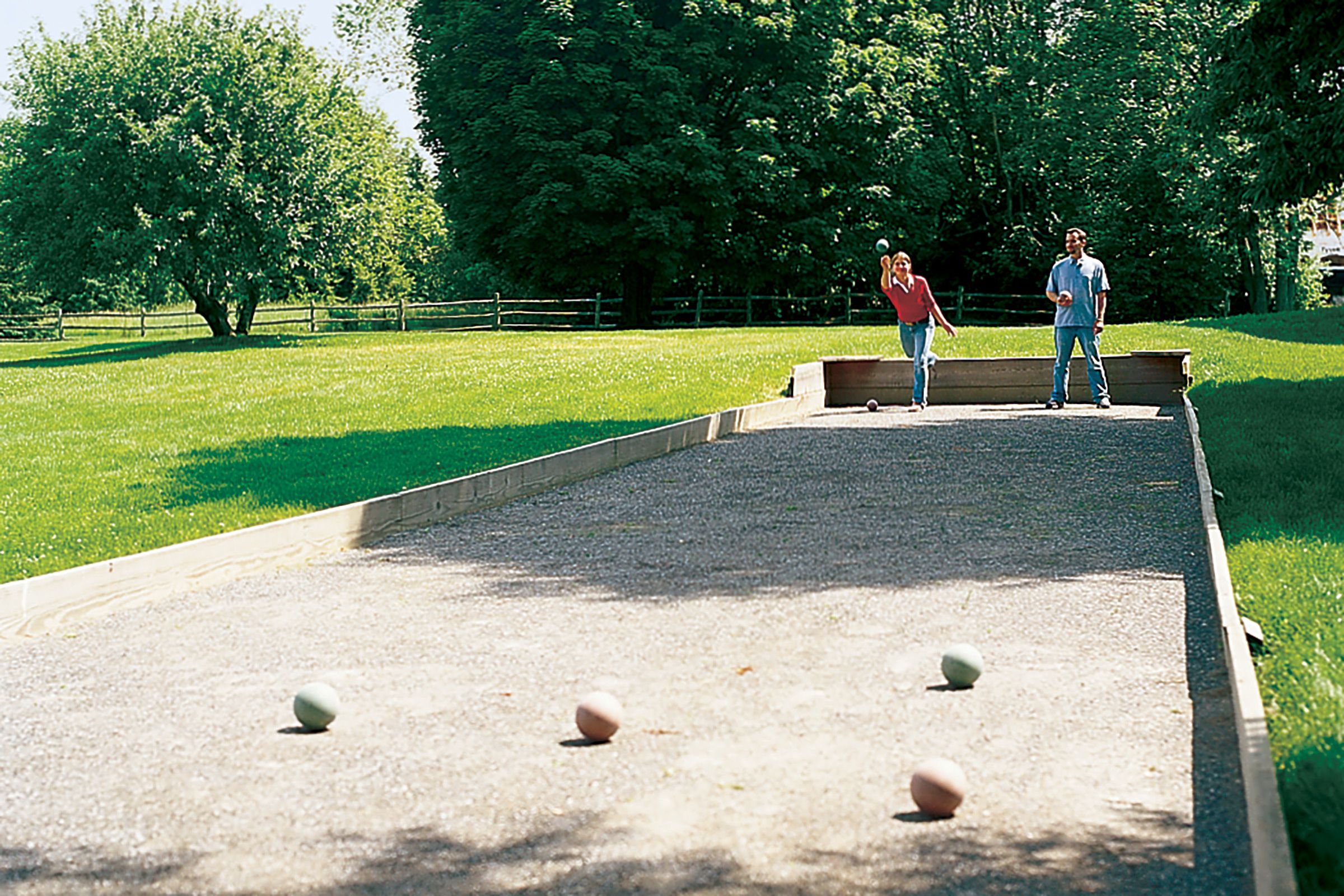
Consider options that work best for your interests and available space when putting a recreational area in your backyard, such as the following:
- Bocce ball court
- Horseshoe pit
- Putting green
- Croquet lawn
- Children’s play area with swings or a sandbox
When adding recreational areas to your design, consider safety, maintenance requirements, and how they blend with the overall landscape design. Make sure play areas are safely distanced from fragile plants and structures for peak enjoyment without constant worries about potential damage.
A simple bocce court, like the one shown here, can be assembled in a couple of weekends. All it takes is enough 2x12s and wooden pegs to make a 12-by-60-foot frame, several tons of gravel for a well-tamped base, and enough stone dust for a 6-inch playing surface. Bocce balls are not included.
7. Make a Quiet Destination
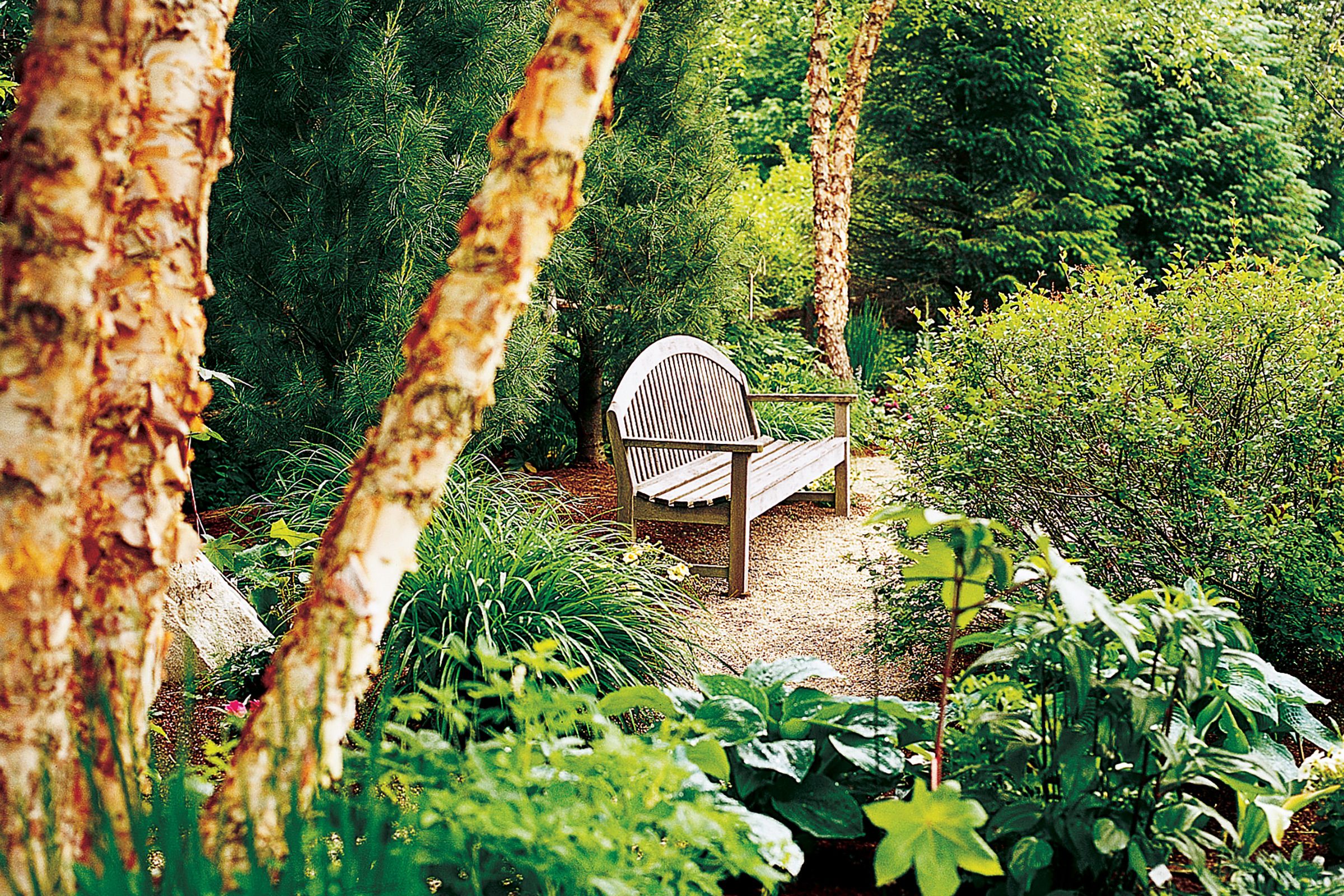
Creating a peaceful retreat within your backyard gives you a space for relaxation and contemplation. This could be a simple bench under a tree, a secluded seating area, or a small meditation garden. A quiet destination can become your personal sanctuary, a place to unwind and reconnect with nature.
When designing a quiet destination:
- Choose a location with a pleasant view or natural focal point.
- Use plants or structures to create a sense of enclosure and privacy.
- Select comfortable, weather-resistant seating.
- Add elements that appeal to the senses, such as fragrant plants or a small water feature.
- Consider adding shade for comfort during hot days.
By carefully thinking through these elements, you can create a tranquil space that improves your backyard experience. Regularly spending time in a peaceful environment can have excellent benefits for your overall well-being.
